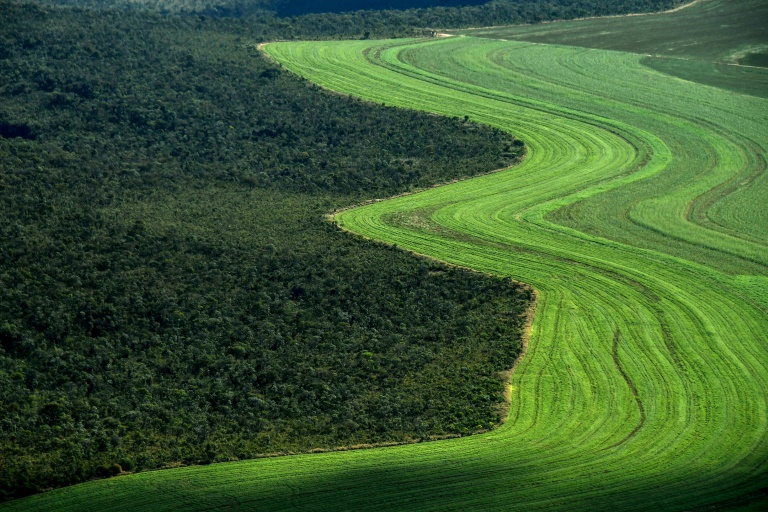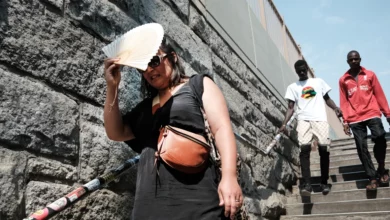There’s a Sufi parable about the fictional Mullah Nasruddin who is crossing a river by ferry with a learned man who asks if he has properly studied his grammar. The Mullah admits he hasn’t. “Then half your life has been wasted” says the pedant. Moments later the Mullah asks the scholar if he knows how to swim. He doesn’t. “Then all your life has been wasted,” the Mullah tells him, “because we are sinking.”
When it comes to national development, Egypt has had a hard time keeping its head above water, balancing theory with practice, thinking comprehensively to determine its priorities and act upon them. Decision-makers have followed a haphazard course, making headway with some projects and backtracking on others. The results of these scattered efforts are all around us.
Egypt’s scientific community has finally jump-started the debate over the country’s post-Mubarak developmental direction. Several high-profile figures have proposed large-scale projects — Farouk al-Baz’s “Corridor of Development”, Mostafa Amer’s “Map of Hope” and Ahmed Zewail’s “Science City” – each with its features and drawbacks. The ensuing critique of these projects has raised issues whose importance cannot be overestimated, including land and water use, energy production and education. Significant arguments have been raised; some are reaching the ears of the public and transitional government.
But the debate still fails to convey the urgency for broad-based action, perhaps because the realities are so daunting. Rhetoric is typically a distant ancestor of change, and we are being drowned in it now, at a time when the lifeboats should long since have been launched. Today’s developmental discourse betrays a degree of the same denial and misreading of the headwinds that has already come at a heavy cost.
In an recent article for the Huffington Post, Ahmed Zewail described his “Science City” saying that, “the key to moving forward is building confidence among the people with a high-profile project that captures the imagination and symbolizes what the future can bring.” Zewail, who recalls how the building of the Aswan High Dam helped rally the nation behind the 1952 Revolution, believes that the appropriate “post-revolution national project for Egypt comparable to the Aswan High Dam is education.”
While the project is admirable the analogy is unfortunate, not least owing to the severe environmental damage stemming from the High Dam. And while it would certainly make Egyptians proud to have a Science City, in the same way they are proud of Smart Village, they’d probably prefer to have their primary school children each have a chair and a desk in a decent classroom where they learn more than the alphabet and how to memorize texts. Nor does 6 October City need another hi-tech complex when the campuses of once prestigious universities in Cairo and elsewhere languish in neglect.
Environmental conservationist Sherif Baha al-Din posed the essential question: How do we want Egypt to look in 100 years? On what will its economy be based? Agriculture? Services? Industry? Deciding a direction now is vital in order to achieve an agreed-upon vision, to prioritize projects to meet that goal.
But after decades of mismanagement such fine-tuned planning is a luxury Egypt can scarcely afford. The population will double within the next 30-40 years. Where will these people live, and how, given the country’s limited resources? In the absence of adequate water, food and energy it’s hard to imagine Egypt surviving another 100 years at all, much less happily engaged in one pursuit or another. Under these circumstances, the priority is land and water usage, balancing food and energy production, and it cannot wait out the rhetoric.
Egypt’s desertification is proceeding more rapidly than anywhere on earth. With coastal erosion and urban encroachment, arable land is literally disappearing beneath the feet of a burgeoning, hungry population at a mind-boggling rate of 3.5 feddans per hour. The hardship already suffered by millions due to water shortages, the loss of livelihood owing to land grabs, the impact of land and water misuse on food production – these realities are all but ignored, except for a smattering of disconnected projects and fragmented media coverage. Candidates for parliament or the presidency who fail to outline a plan to remedy this situation should not be taken seriously.
Despite the dire statistics and visual proofs there is virtually no public discussion of the gravity of Egypt’s environmental condition. Land and water losses in the last two decades alone are staggering, but so is the lack of responsible action by the state or private developers to reverse or at least slow them down. Some years ago Egypt boasted 18 golf courses – notoriously huge water consumers – and less than a thousand golf players. The number of lushly-landscaped residential communities and resorts has since multiplied.
Alternative energy production (and its use in private and institutional prototypes), in a place so perfectly positioned to profit from it, is inexcusably behind the curve. Take the sprawling new AUC campus. The amount (and cost) of petrol-based pollutants required to illuminate and air condition this behemoth is immense. How could a university that considers itself forward-thinking and environmentally-aware have squandered the opportunity to make its campus a global showcase for sustainable desert architecture? Ditto the misnamed Smart Village.
Zewail is right about one thing (aside from the need for higher education, especially among educators) – Egypt could definitely use a “national project”, one that promotes unity though participation and constructively addresses the nation’s most pressing developmental issues.
That project should be aimed at conserving land, water and energy, an effort that benefits everyone and everyone can get behind. Moreover, it can start now – with a high-saturation media campaign promoting the many small actions citizens can take, and the potential consequences should they fail to do so.
Shutting off lights, fixing leaks, using A/C water for plants – the possibilities are endless, the cumulative effects significant. Of course, not everyone has water or electricity to waste, precisely because their inequitable allocation has received insufficient attention. A hotline for reporting broken pipe or transmission lines and blatant land, water and pollution abuses, backed by a fast-response team of investigators/fixers – why not? State and private TV, radio and press, telecom and PR agencies could begin by contributing airtime and resources pro bono, to demonstrate their commitment to Egypt’s future.
Crucially, such a campaign would serve to build the awareness that as much as Egyptians love their country they are just as surely killing it. Yes, Egypt needs a constitution, human rights and free elections. But in the absence of a coordinated program where the state, private sector and greater public cooperate to address Egypt’s environmental crisis, this will all be beside the point, the equivalent of the scholar’s polished grammar which cannot save him from drowning.
Egyptians should be given the opportunity to comprehend the extreme fragility and vulnerability of their anomalous piece of earth, the awesome generosity of the Nile and its perilous depletion. Imagine a collective project to safeguard the nation’s most precious treasure: its material well-being, its physical self. Now that would be revolutionary.
Maria Golia, a long-time resident of Egypt, is author of Cairo, City of Sand and Photography and Egypt, permanent correspondent for The Middle East (UK)and columnist for the New Internationalist (Oxford).




